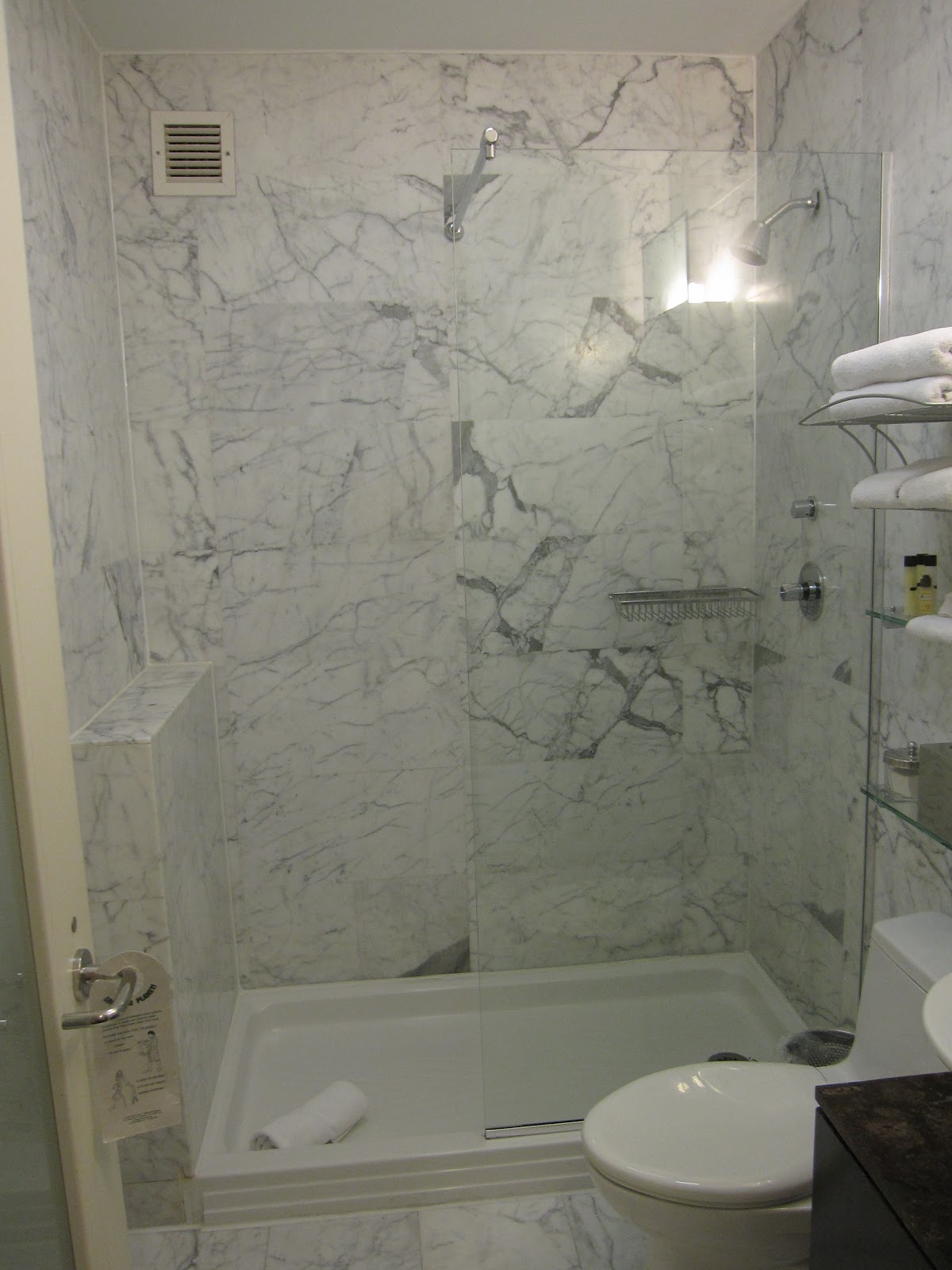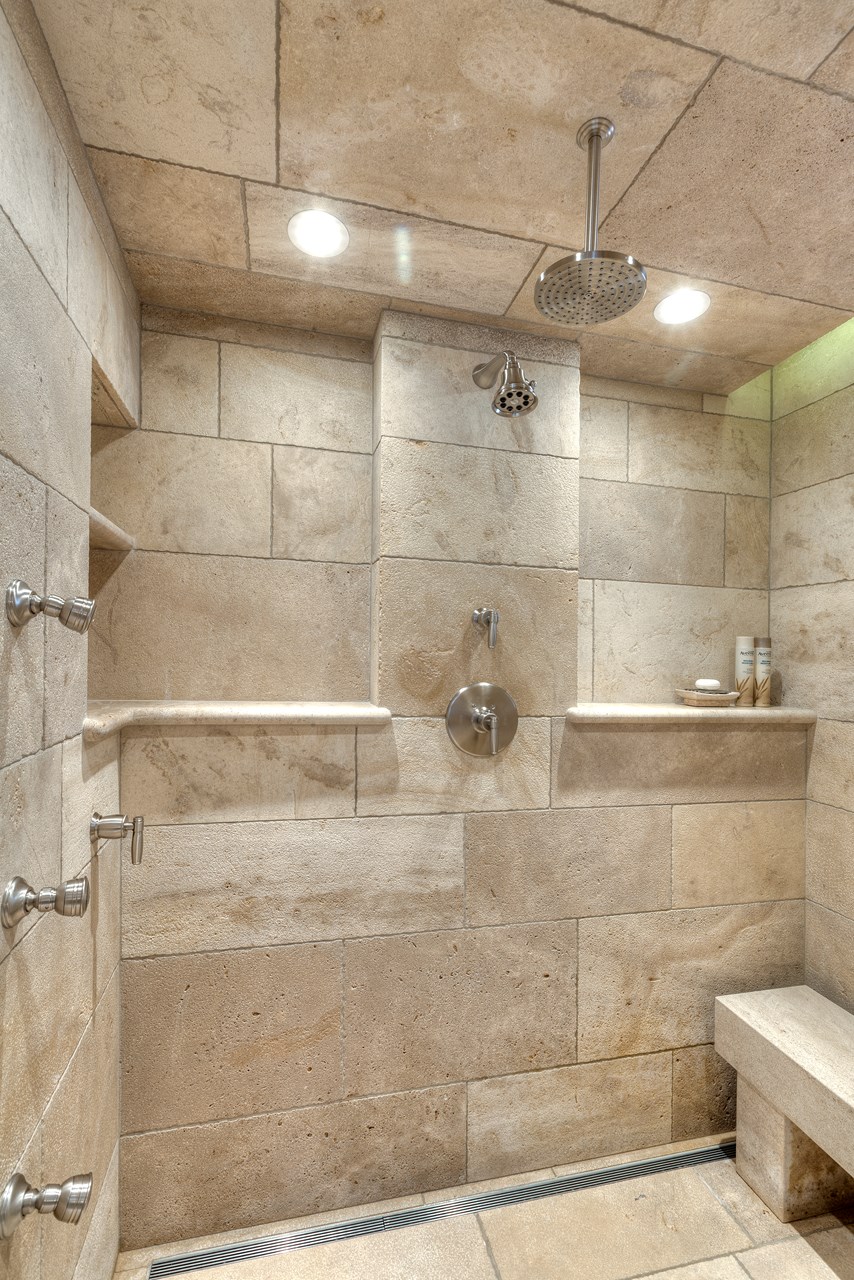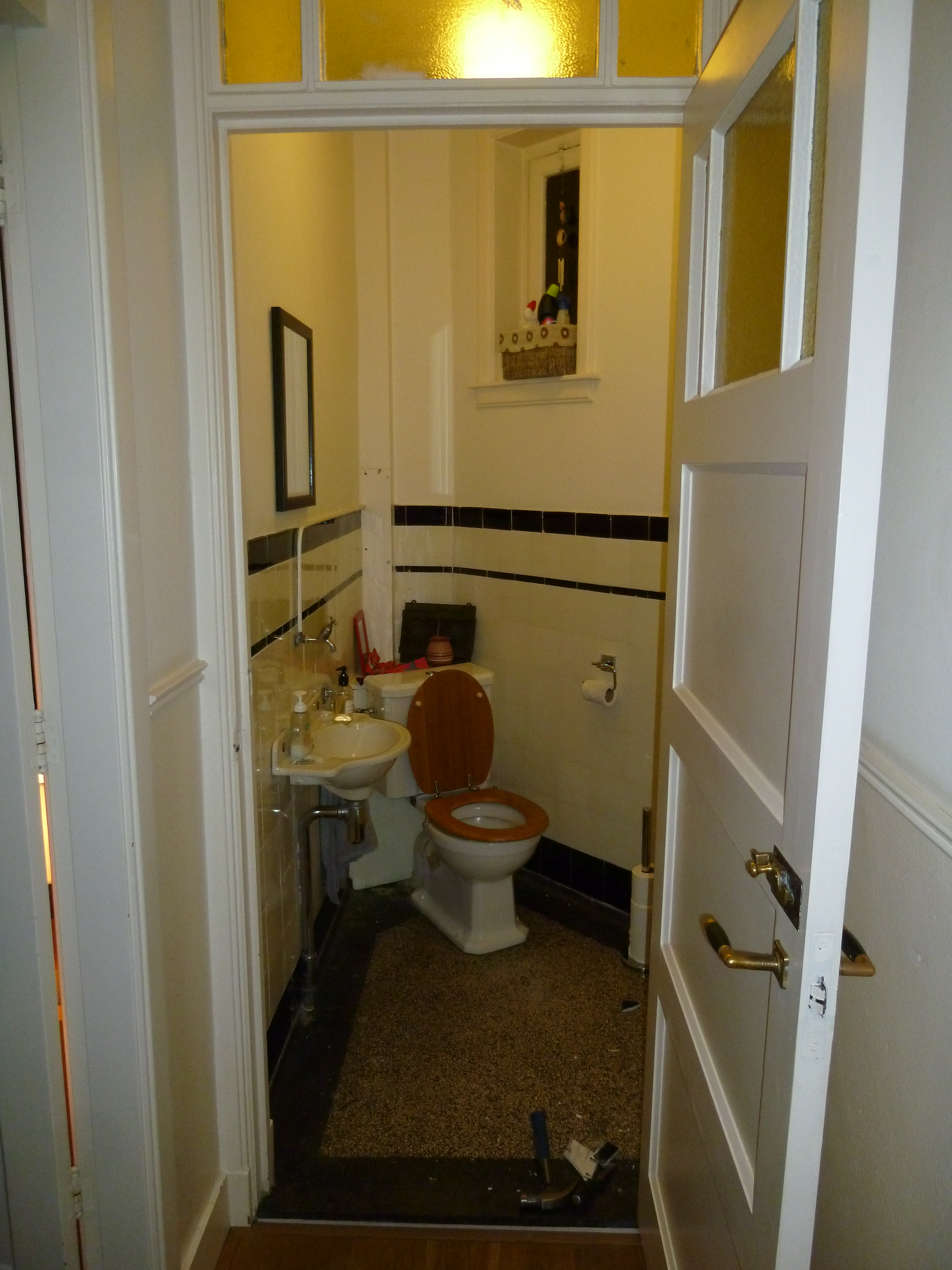Marble tile bathroom floors create a luxurious foundation with timeless elegance. Classic white Carrara marble with soft gray veining brightens small bathrooms while adding subtle movement. Large-format tiles (12″x24″ or larger) minimize grout lines for a seamless, spa-like appearance. Honed finishes provide better slip resistance than polished surfaces in wet areas. Darker marbles like Nero Marquina make bold statements in master baths, contrasting beautifully with white fixtures. Book-matched marble slabs create dramatic mirrored patterns for showstopper floors. The natural stone’s cool surface feels refreshing underfoot, especially in warmer climates.
Practical considerations ensure marble tile performs well in bathrooms. Choose honed or textured finishes for wet areas like shower surrounds. Smaller tile sizes (like hexagons) increase grout lines for better traction. Quality sealants prevent water absorption and staining—reapply every 6-12 months. Avoid acidic cleaners that can etch the calcium-based stone. Radiant floor heating balances marble’s natural coolness in colder regions. These precautions maintain both the floor’s beauty and functionality despite bathroom-specific challenges. Properly maintained marble develops a rich patina that enhances its character over time.
Design combinations maximize marble tile’s visual impact. Pair white marble with brass fixtures for classic luxury, or matte black hardware for contemporary contrast. Continue the same tile up shower walls for a cohesive, expansive look. Mosaic marble borders define spaces while adding intricate detail. Mixing marble varieties—like white field tiles with gray veined accents—creates custom patterns. The stone’s natural variations ensure no two floors look exactly alike. These design approaches transform ordinary bathrooms into elegant retreats with high-end appeal.
Installation techniques affect the final appearance and longevity. Professional installers ensure proper subfloor preparation to prevent cracking. Epoxy grout resists moisture better than cement-based options in wet environments. Leveling systems create perfectly flat surfaces critical for large-format tiles. Diagonal layouts or herringbone patterns require precise cutting but add designer flair. Allow extra tiles for future repairs, as matching marble’s natural variations later can be difficult. Quality installation preserves the stone’s beauty while preventing moisture-related issues.
Budget-friendly alternatives make marble accessible. Marble-look porcelain tiles offer similar aesthetics with greater durability and lower maintenance. Using marble only in key areas (like shower floors) reduces costs while maintaining luxury. Honed finishes hide wear better than polished, extending the floor’s pristine appearance. Opting for standard tile sizes rather than custom cuts lowers material expenses. These strategies help achieve marble’s sophisticated look without exceeding practical budgets.
Maintaining marble tile preserves its beauty long-term. Daily dust mopping prevents abrasive dirt from scratching the surface. pH-neutral cleaners formulated for stone prevent etching and maintain sealants. Immediately wipe up spills, especially colored liquids that could stain. Place non-slip mats near tubs and showers to protect high-traffic zones. Avoid rubber-backed rugs that can trap moisture against the stone. With proper care, marble floors develop a distinguished patina that many homeowners cherish.
Color selection impacts both aesthetics and practicality. White and light gray marbles brighten windowless bathrooms and make small spaces appear larger. Dark marbles hide minor stains better but show water spots more noticeably. Beige and cream tones create warmth without overwhelming the space. Consistent veining patterns provide a calmer look than dramatic, high-contrast variations. The right color choice depends on the bathroom’s size, lighting, and overall design goals.
Texture options cater to different safety needs. Honed finishes provide natural traction for family bathrooms. Tumbled marble edges create old-world charm with inherent slip resistance. Polished finishes reflect light beautifully in powder rooms with less moisture. Textured treatments like bush-hammering add grip for shower floors. Selecting appropriate textures ensures marble remains both beautiful and practical throughout the bathroom.
Lighting considerations enhance marble tile’s natural beauty. Recessed ceiling lights minimize shadows that could obscure the stone’s veining. Wall sconces cast flattering light across the floor’s surface. Natural sunlight emphasizes marble’s crystalline structure and depth. LED strip lighting under vanities creates a floating effect that showcases the floor. Well-planned lighting makes marble’s natural variations a dynamic design element.
Long-term value makes marble tile a worthwhile investment. Quality marble installations can last decades with proper care, outlasting many other materials. The timeless appeal ensures the bathroom won’t look dated as styles change. Marble’s natural elegance often increases home value more than manufactured alternatives. While requiring more maintenance than some options, its enduring beauty justifies the effort for many homeowners. The luxurious yet organic feel creates bathrooms that stand apart from ordinary designs.
Stunning Marble Herringbone Tile bathroom, Porcelain tile bathroom, Marble herringbone
Stunning Bathroom Tile Shower Ideas
wonderful pictures and ideas art deco bathroom tile design
Copper Rust Broken Random Slate Wall and Floor Tile – 20.8 x 20.8 in
Related Posts:







